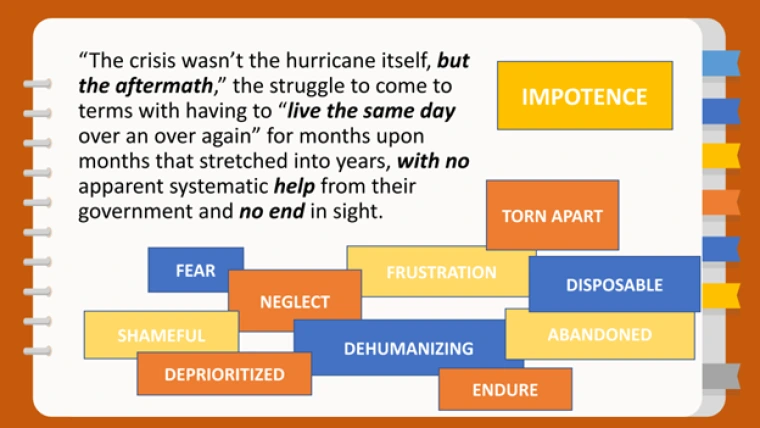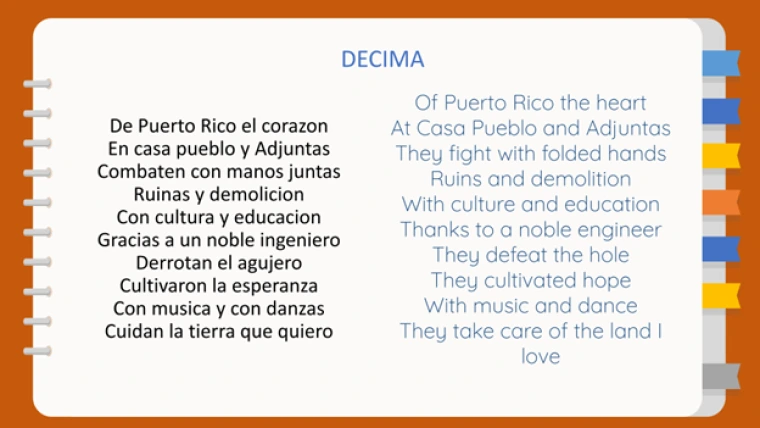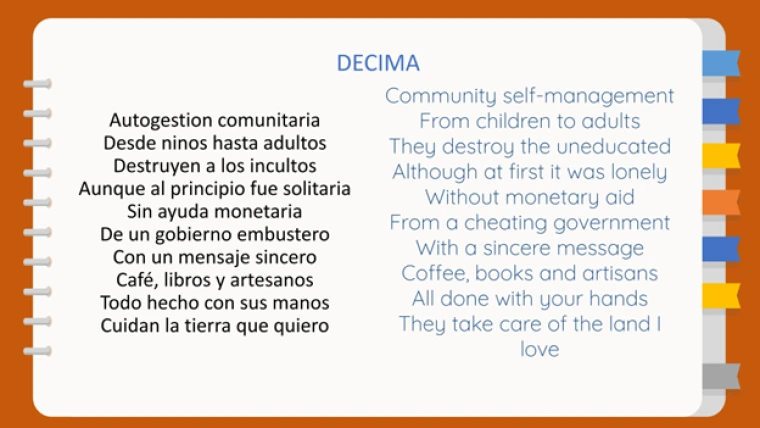Some examples of their cultural artifacts are pictured here, including planters made from soda bottles, homemade jewelry, popular drawings and videos, hand-written journals, paintings, poems, social media memes and personal photographs to name a few. Students presented these artifacts as expressions of their experience in the aftermath of the hurricane.
These artifacts launched what later became the concept of creative resistance. The students chose to use creative means to highlight their struggles as a way to express the depth of meaning and emotions representing their experiences during that traumatizing time.
Later in the term, as part of the YPAR process, students were asked to practice generating themes as part of the process for learning how to construct a research design. They started with concepts that represented their experiences with resilience. Below is a visual of those concepts, which eventually developed into a more nuanced “resistance” framing.
Creating a visual depiction of the concepts we were discussing was the starting point for them to develop their own research questions. We provided a prompt about gentrification in Puerto Rico following the hurricane. These are examples of the visuals they created.
Here are the students presenting:

Understanding one’s own socio political and environmental context is an important component of YPAR. For that purpose, we took the students on a field trip to (hyperlink) Casa Pueblo, an environmental nonprofit that has been advocating for solar energy for twenty years. After Hurricane Maria knocked out the energy grid on the island, for Casa Pueblo, in the town of Adjuntas, their self-sufficient solar grid survived fully intact, allowing it to become an energy oasis for the community. Since Hurricane Maria, they have installed more than 100 solar projects across rural Puerto Rico (second hyperlink).
- Casa Pueblo Collaborates with Google’s Project Sunroof
- La increíble hazaña de Casa Pueblo en Adjuntas
Although they had lived in Puerto Rico their entire lives, students were unaware that this initiative existed, and they were really inspired!!

Keeping with the theme of creativity, we had asked the students to take field notes during the trip and then transform those notes into poetic form. Click here (hyperlink) for example of these remarkable poems, and here for other images of the field trip to Casa Pueblo in Adjuntas Puerto Rico, here we learned about sustainability, self-sufficiency and independence from U.S. economic control.


Eventually, students worked in teams to develop their own research projects.
Two were eventually published in this special issue of the International Journal of Qualitative Studies in Education.
Building on what we learned in the first project with UPR Cayey, in January of 2023, with a new group of students, we started the class with an overview of what it would mean to engage in social science research methods using both more standard and creative approaches.
More details on the 2023 project coming soon!
















